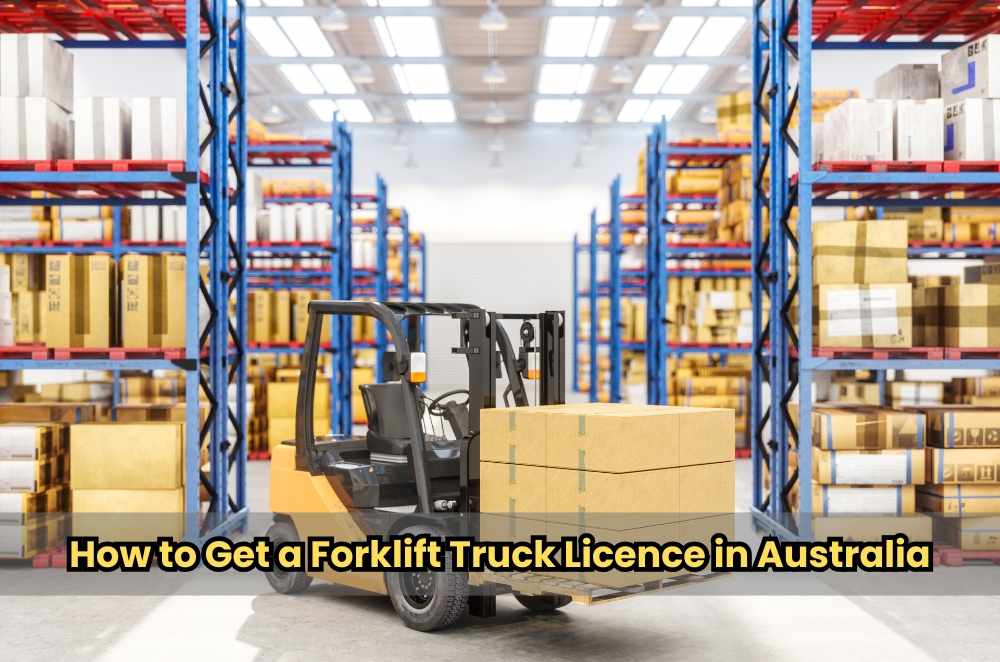
Forklifts are powerful machines. They can lift tonnes of cargo, zip around tight corners, and dramatically increase warehouse productivity. But in the wrong hands? They’re just as capable of causing injury, property damage, or even death. That’s why licensing isn’t just a formality in Australia — it’s the law.
I still remember my first experience stepping onto a warehouse floor. My employer insisted I complete my training before operating anything more dangerous than a pallet jack. At the time, I thought they were being overly cautious. But after seeing a near-miss when a novice operator underestimated a turning radius, I understood why that licence mattered.
Starting with the right forklift licence course is a legal requirement and the smart way to enter the field with competence and confidence.
Who needs a forklift licence — and what types are there?
In Australia, anyone operating a forklift must hold a valid High Risk Work Licence (HRWL). This licence is mandatory for machinery that is capable of elevating loads, including:
LF licence: Covers standard forklifts such as counterbalance and high-reach models
LO licence: Covers order-picking forklift trucks where the operator is lifted with the load
It’s a common mistake to assume one licence covers all types of forklift trucks. I found out early in my training that moving from a counterbalance unit to an order picker meant starting fresh with different safety requirements. Even the harness protocols were totally different.
What are the eligibility requirements?
Before enrolling in a training course, you’ll need to meet some basic criteria:
Be at least 18 years old
Have sufficient English literacy to understand safety instructions and complete exams
Provide valid photo identification
Have access to a Registered Training Organisation (RTO)
Once you complete the formal training, you’ll also need to demonstrate competency on both theory and practical assessments — typically observed by a WorkSafe-accredited assessor. Each state and territory may have slightly different processes, but all follow national guidelines.
More importantly, your course must prepare you to meet the licensing requirements in Australia as outlined by Safe Work Australia. This includes supervised practical training, proper use of PPE, and full knowledge of workplace safety obligations.
What to expect during a forklift training course
A comprehensive forklift course isn’t just about passing a test. It’s about gaining the skills to operate heavy machinery in fast-paced, high-risk environments. Training is typically broken into three components:
Classroom or online theory
Here you’ll cover:
Legislative requirements
Hazard identification
Load estimation and handling
Workplace communication and signals
Practical, hands-on training
This involves:
Pre-start safety checks
Manoeuvring in confined spaces
Stacking/unstacking on the racking
Emergency procedures
Final assessment
This includes a written or verbal knowledge test and a practical skills evaluation under controlled conditions.
When I took my course, the most valuable part wasn’t the textbook. It was the role-play drills, like navigating an obstacle course while under simulated time pressure. That’s when things clicked: being licensed wasn’t just about legality; it was about staying in control under stress.
Safety training is part of the culture
Operating a forklift safely doesn’t end when your certificate arrives in the mail. Safety is a daily discipline. And one of the most overlooked — yet critical — steps is performing a forklift safety checklist before each shift.

I once flagged a brake fluid leak during a morning check, and it turned out to be a major issue. If I had skipped that inspection, it could have resulted in a collision inside the loading dock. No one thanked me with a medal, but they didn’t need to. The absence of a crisis was reward enough.
How long does a licence last?
Your HRWL is valid for five years. As you approach expiry, it’s your responsibility to renew it via your local WHS regulator. Letting it lapse means you’ll have to retake assessments — and in some cases, the entire training course.
Aside from official renewal, you may also need additional training if:
You haven’t operated a forklift for a significant time
Your role changes to a more complex work environment
New machinery or safety technologies are introduced
Employers often schedule refresher training every couple of years, especially after incidents or when introducing new site layouts. It’s not about questioning your ability — it’s about keeping safety culture front and centre.
Going beyond the basics: Building career-ready skills
A licence gets you in the door — but to truly thrive as an operator, you need to go beyond minimum standards. This includes learning how to:
Communicate clearly with spotters and warehouse teams
Read load charts and stacking plans quickly
Understand advanced load dynamics and uneven terrain handling
Stay up to date with legislative changes and technology upgrades
Many operators take the initiative to develop key operator training skills that make them more valuable in a logistics or warehousing role. These may include soft skills like decision-making under pressure and hard skills like machinery maintenance and fault detection.
One colleague of mine started as a seasonal operator and, within a year, became a lead trainer — all because he kept investing in his development.
Final thoughts: Licensing is just the beginning
Getting your forklift licence is a milestone, but it shouldn’t be the end of your learning. Treat it as your first step into a highly skilled trade. A well-trained operator is one of the most valuable people in any warehouse — and the one most likely to avoid injury and downtime.
By choosing the right forklift licence course, meeting licence requirements in Australia, and committing to ongoing development, you're not just getting certified — you're futureproofing your career.


Write a comment ...